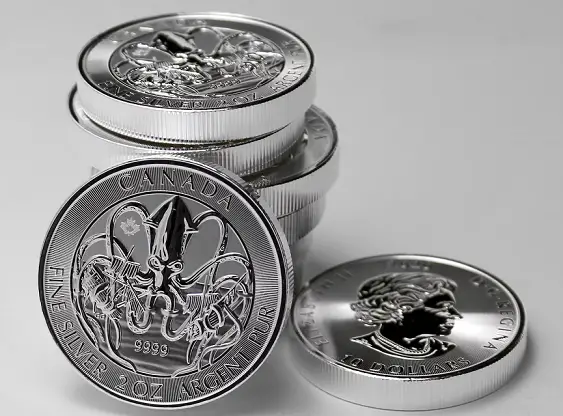This year some analysts are predicting silver could reach $30 per ounce, hitting a nine-year high as the precious metal outpaces what is expected to be a bullish run for gold bullion as well
Analysts interviewed by CNBC noted that traditionally silver is a better performer than gold during times of inflation, and presently there are insufficient supplies of the precious metal, driving prices up.
It was February 2013 when silver last hit $30 per ounce levels, according to data from Refinitiv.
Janie Simpson, CEO at ABC Bullion said, “Silver has historically delivered gains of close to 20% per annum in years inflation is high. Given that track record, and how cheap silver remains relative to gold, it wouldn’t surprise to see silver head towards $30 per ounce this year, though that will likely offer significant resistance.”
Silver’s record spot-high was hit in 1980, when it hit $49.45 as inflation was soaring at a rate of 13.5%, rising from around $4 in 1976 when inflation was more moderated at 5.7%.
Nicky Shiels, head of metals strategy at precious metals company MKS Pamp pointed out, “Silver is in a shortage… and there is a notable drawdown in the available physical stocks held in New York and London’s physical hubs, more so than seen in gold.”
Shiels went on to note that analysts expect silver to post deficits of over 100 million ounces over the next five years, as industrial demand tightens the supply. He said, “The largest segment of silver demand is industrial, [which equates] to almost 50% of total demand.” He predicts silver will climb at least to $28, with $30 a distinct possibility.
Shiels expects the demand for silver to grow over 15% during the next five years, as automotive and electronics applications accelerate the industrial demand. Silver is commonly used in applications ranging from the manufacturing of automobiles to solar panels, jewelry, and consumer electronics.
Randy Smallwood, president of Wheaton Precious Metals said, “We hit peak silver supply back about five, six years ago. Silver production on a worldwide basis has actually been dropping, and we’re not seeing as much silver produced from the mines.”
Data from the trade group The Silver Institute shows the supply of silver being produced by mine production in 2022 was 843.2 million ounces, down from the decade’s peak of 900 million ounces in 2016.
Because silver is largely produced as a byproduct of mining other metals, such as lead-zinc, copper, and gold, the supply of newly mined metal is not as responsive to changes in demand.
Smallwood said, “When silver prices go up, it’s not like the silver mines can increase production, because the silver mines only supply about 25% of the silver.”
He notes however that while he thinks silver may touch $30 per ounce, he does not see that price as widely supported for long, though he thinks prices will “stay comfortably over $20 per ounce,” adding, “I’m very bullish on gold, but I’m even more bullish on silver.”
On the other side, other analysts like MKS Pamp point out that if the global economy is going to cool, that will reduce production in the manufacturing sector, and that could soften silver demand for industrial uses. MKS Pamp sees silver dropping to as low as $18 an ounce if that occurs.
Pallion’s Simpson seconded that cautionary note, though they are quick to add, “If the Fed continues to tighten, and if inflation falls away more rapidly than the market expects, that will be a headwind for silver, especially if the economy heads into a recession, given the large share of silver demand tied to industrial output.”

